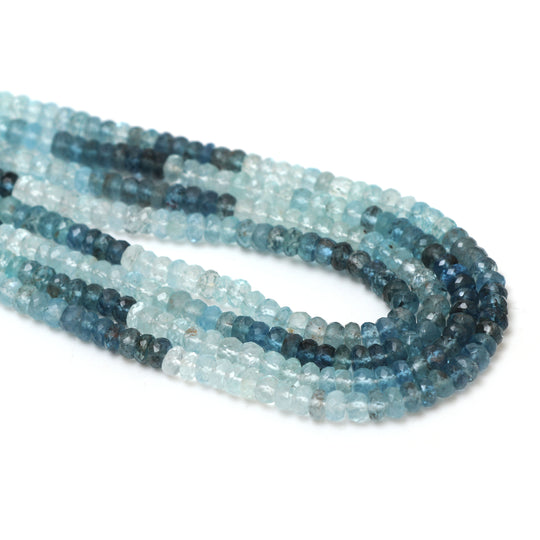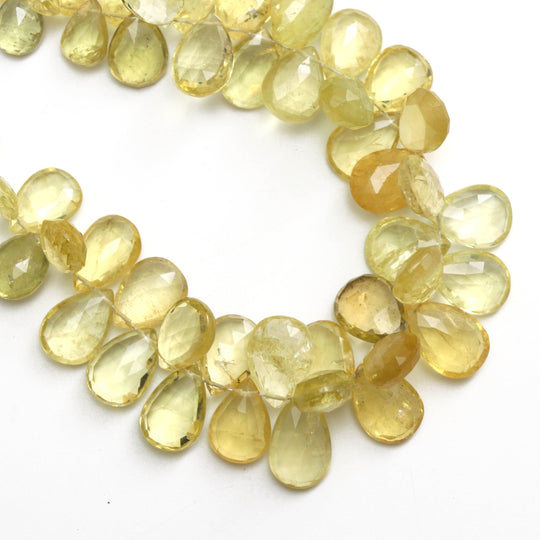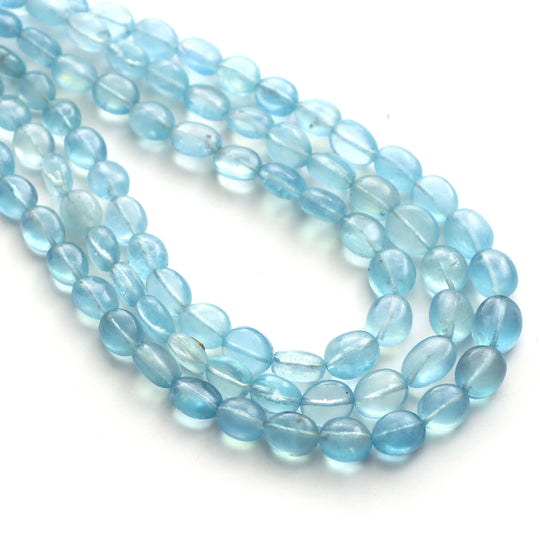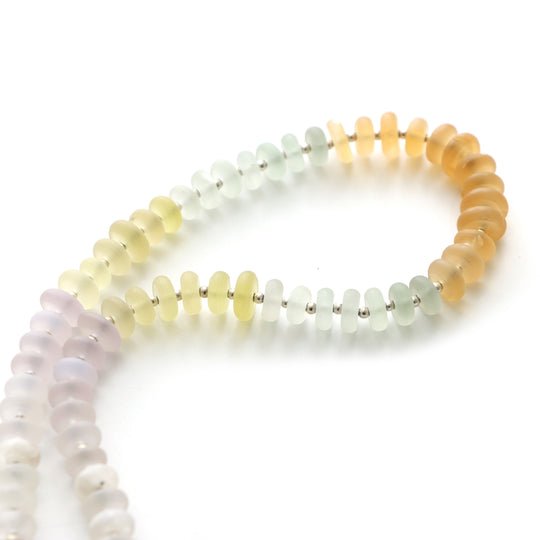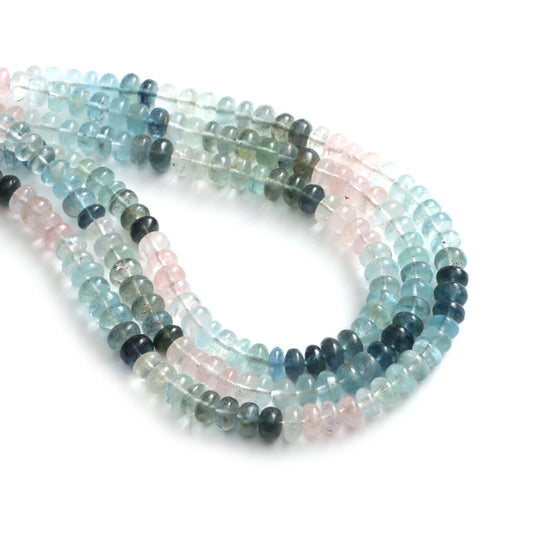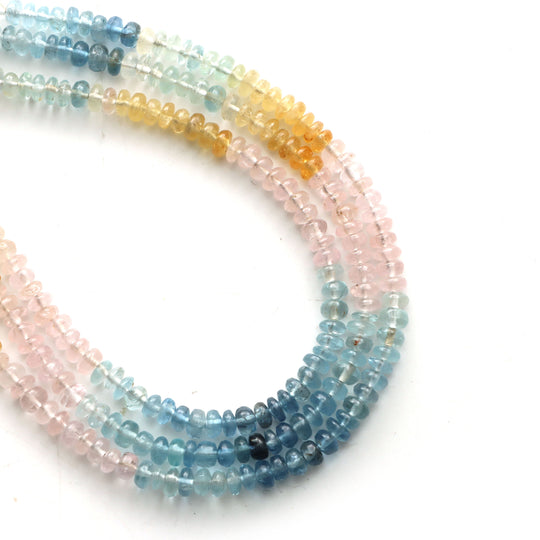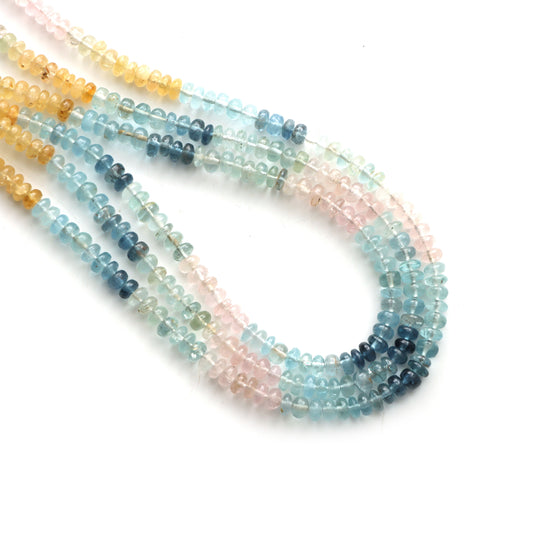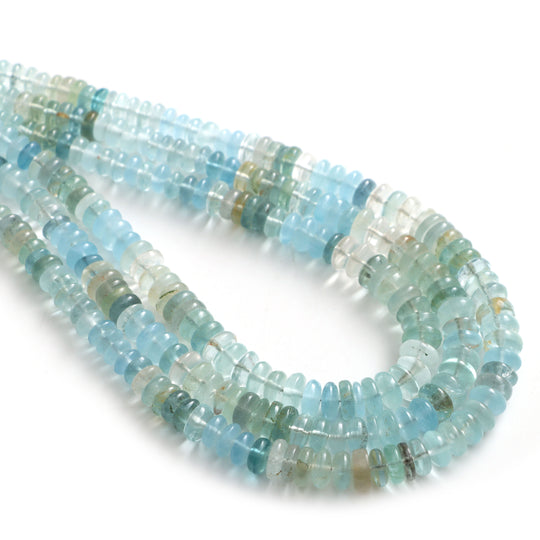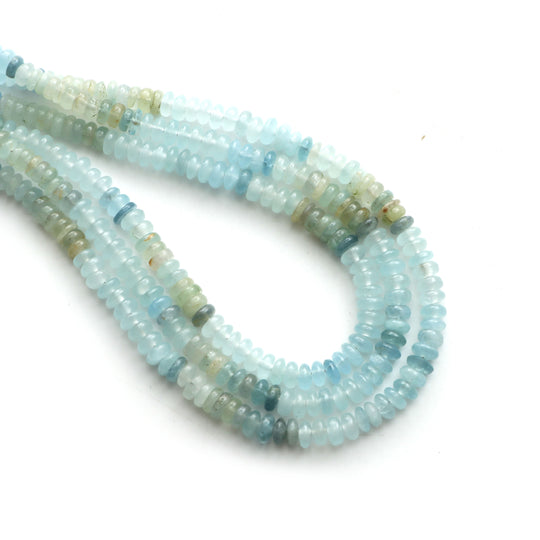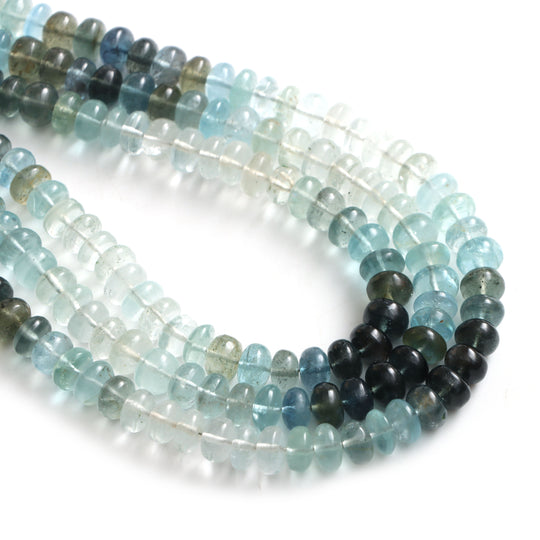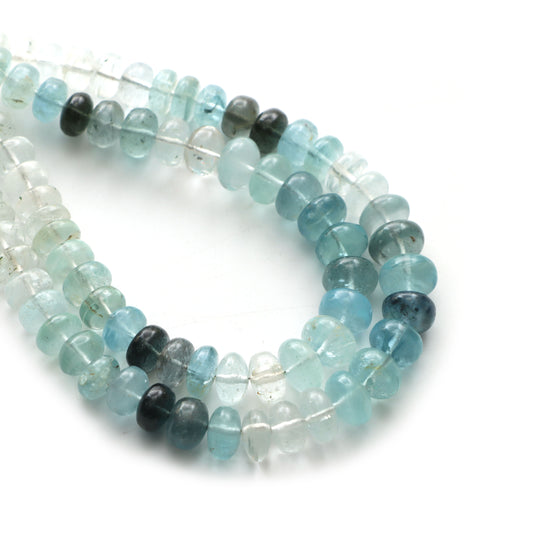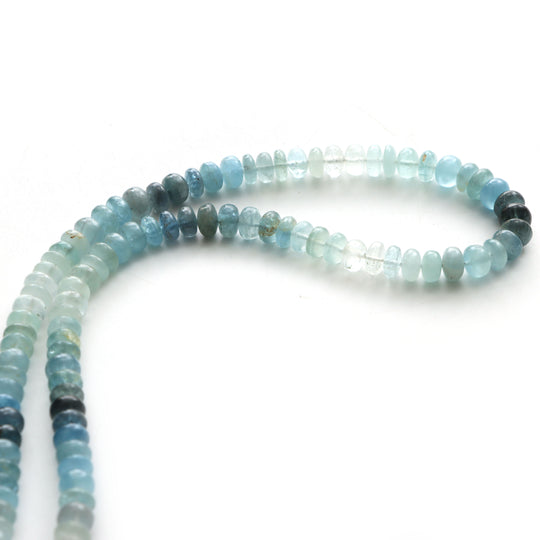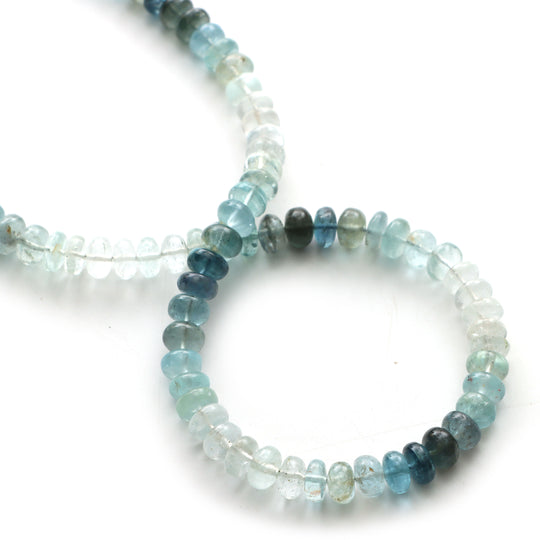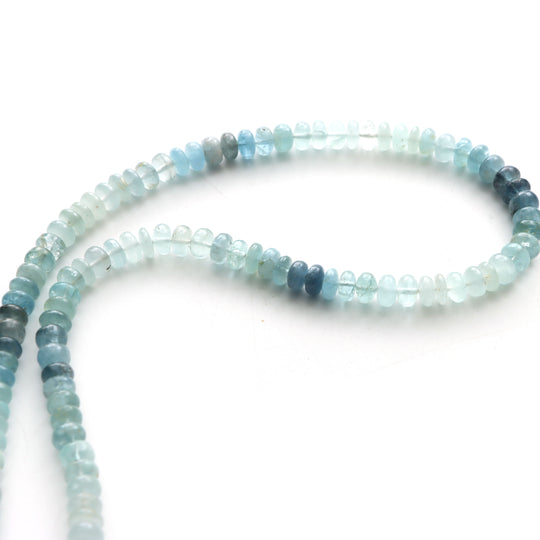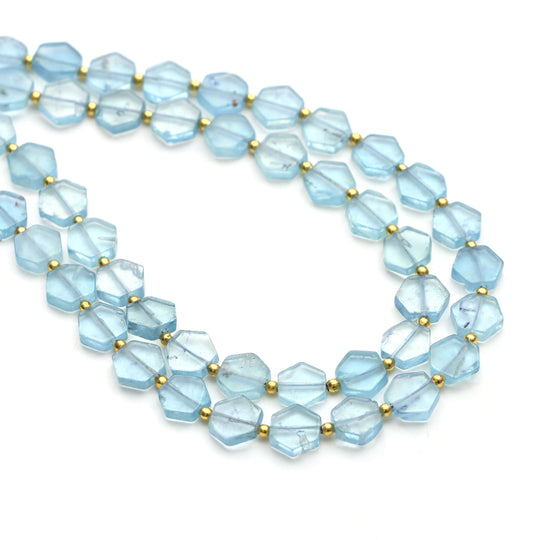What is Aquamarine Gemstone?
Known for its distinctive blue hue, Aquamarine is the birthstone for March. It has long been associated with youthfulness, good health, and hope because of its unique shade.
Aquamarine is often set in fine jewelry and combines metals like silver or white gold. The combination of these colors can give an outfit a summery feel. Often associated with the ocean, the mesmerizing blue color of the turquoise ranges from pale to deep blue.
Aquamarine
- ←
- →
Where Do Aquamarines Gemstone Come From?
Aquamarine gemstone was once thought only to be found in Brazil and other parts of South America. However, the stone is now mined on almost every continent. Natural Aquamarine occurs in Kenya, Nigeria, Madagascar, Zambia, Tanzania, Pakistan, Sri Lanka, and Russia. These are some of the countries where it is found. At National Facetes, we responsibly source Aquamarine from around the world to bring you only but the finest and most pure of its kind.
The most common form of Aquamarine on the market today is faceted, but it can also be cut as a cabochon, which produces an asterism effect similar to that of a cat's eye.
How to ensure the quality of Aquamarine?

The deeper the blue of an Aquamarine stone, the better it will be and the more valuable it.

is defined by how transparent and clear the aquamarine crystal is. The fewer inclusions it has, the finer.

the spectacular blue hues of Aquamarine suggest that properly cut stones best display shine and brilliance.

Like every other jewel, a bigger carat size makes the aquamarine stone more valuable and desirable.
Frequently Asked Questions
Q: WHY DOES AQUAMARINE GEMSTONE/BEADS COST SO MUCH MORE THAN BLUE TOPAZ THAT'S ALMOST THE SAME COLOR?
A: Blue topaz gemstone is more common because the color is produced by treating colorless topaz with radiation. Aquamarine is rarer in nature, especially in fine color. Its long history as a gem also adds to its collectibility.
Q: WHY DON'T THE AQUAMARINE SIDE STONES IN MY RING MATCH THE CENTER STONE?
A: Aquamarine’s color gets more intense as it gets larger. It is very difficult to find small sizes with saturated color: most stones below a carat in size have a pale color.
Q: ARE ORIGINS LIKE “SANTA MARIA” IMPORTANT TO THE VALUE OF AQUAMARINES?
A: Although it’s always interesting to know where a gem was mined, origin isn’t an important factor in an aquamarine’s value. Famous mines are well regarded because they produce fine-quality gems that are valuable; gems aren’t fine or valuable just because they come from famous mines.
Q: WHAT IS AAA-QUALITY AQUAMARINE?
A: Although individual companies might create their own quality descriptions, like AAA, AA and A, to denote the range of quality of their goods, no standard quality-grading scales exist for aquamarine.
Q: Is Aquamarine Natural?
A: Actually there are natural and synthetic varieties of aquamarines.
The blue-green gemstone aquamarine is found in many colors and styles, but it is often called the "natural" royal blue stone.
Q: What are the Important Factors that Determine the Quality of Aquamarine?
A: Some factors that have been found to affect the quality of aquamarine stones include color, clarity, size, shape, and composition. Color is probably the most important factor because it can determine how well the stone will dress up a piece of jewelry. Aquamarines with a deep blue color are usually the best quality because they look vibrant and colorful.
Q: Is Aquamarine More Expensive Than Diamonds?
A: Basically Aquamarine price is less then diamonds. Factors that may contribute to the price difference include rarity, supply and demand, and the manufacturing process.
What does the aquamarine stone symbolize?
A: The aquamarine stone is known as a symbol of happiness, hope and everlasting youth. In ancient times, it was thought to protect those who wore or carried it. Aquamarine is said to bring happiness and calmness to the wearer, and is also known for its ability to enhance psychic abilities.
Q: On Which Hand Should You Wear Aquamarine?
A: Basically it should be wore in working hand. So correct answer is Working hand. Remember that your working hand could be right hand or also left hand.
Q: What Gemstones Should Not Be Worn Together?
A: There are some combinations that should not be worn together because they can lead to negative energy. Here are some gemstone combinations that should not be worn:
1. Turquoise and Diamonds - Turquoise is a calming stone and pairs well with diamonds to create a sense of luxury and power. However, these two stones have a high energy level and can cause interference if worn together.
2. Emerald and Ruby - Emerald is known for its spiritual properties, while ruby is associated with love and passion. When these two stones are paired together, they can create an intense energy that could lead to conflict or anger.


